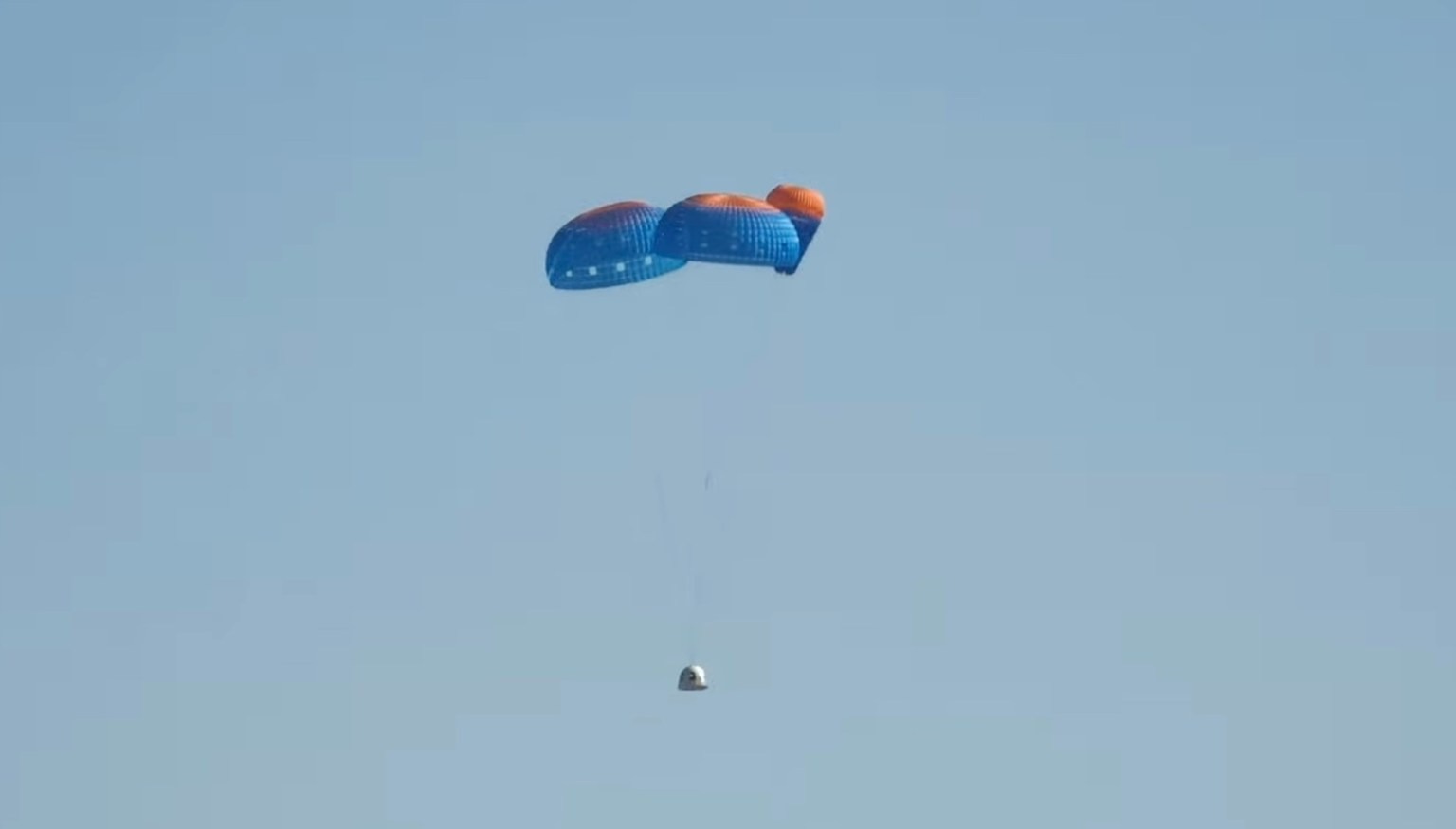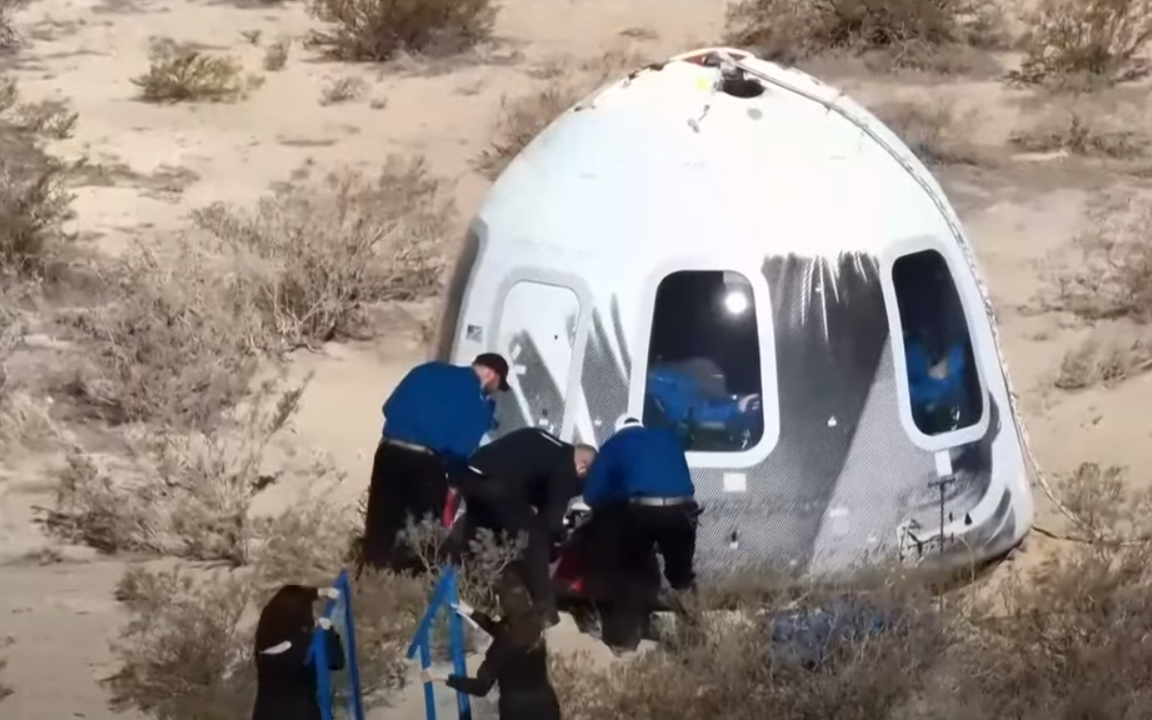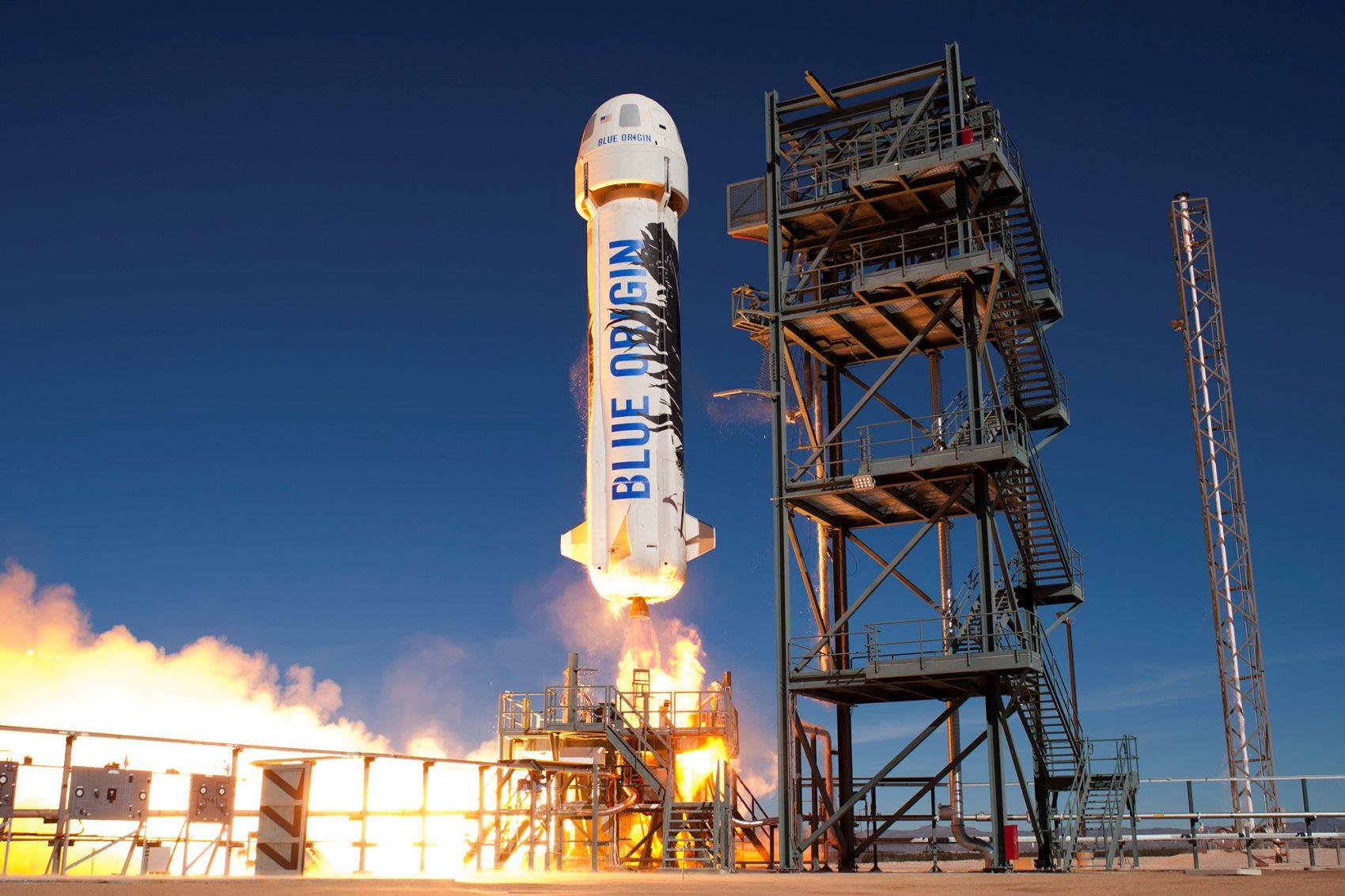Founded by Jeff Bezos, Blue Origin has launched an investigation into the incident, which occurred during the first flight in two years with a crew of space tourists. One of the parachutes on the New Shepard capsule did not open during landing.

On May 19, the New Shepard rocket launched, delivering six tourists to suborbital space. The NS-25 mission ended with a soft landing of the capsule with the crew, but only two of the three parachutes opened completely. Blue Origin has not made the problem public, but has informed NASA of the anomaly. This is because similar components are used in other spacecraft, such as the Boeing Starliner. The incident was reported by Steve Stich, head of NASA’s commercial crew program, during a briefing on the Boeing Starliner test flight.
New Shepard uses three parachutes to slow down the capsule during its return to Earth. The capsule can land even with one parachute open. But during the NS-25 mission, one of the parachutes did not open at the first stage due to the fact that the tape that controls its filling was not cut.

It is not yet known how serious the problem with the parachute is and whether it will cause further delays. Despite this, if one parachute does not open, this may indicate potential failures during descent.
Blue Origin Incidents
Blue Origin has resumed its space tourism program with the NS-25 mission after almost two years of break. In September 2022, a crewless New Shepard flight ended in a fire a minute after takeoff. The rocket’s booster exploded, and the capsule separated from it at a speed of about 1,130 km/h at an altitude of 8,840 meters.
The reason for the failed launch was a “thermo-structural failure of the engine nozzle.” At that time, New Shepard carried 36 payloads, more than half of which belonged to NASA. There was no crew on board.

The company resumed its activities in the field of space tourism, carrying out the seventh human spaceflight on May 19.
NASA’s similar problems
Engineers of the Boeing Starliner program discovered their own parachute problem, which delayed the first flight of the capsule with the crew. A few weeks before the scheduled launch on July 21, 2023, Starliner teams discovered that the fabric sections of the parachutes had a lower breaking load limit than expected. This meant that if one parachute failed, the other two would not be able to slow down the Starliner spacecraft enough for a safe landing. In March 2024, Boeing announced that it had solved this safety problem.
The problem with parachutes is related to the difficulty of accurately modeling the environment in which they open. “Even today, with all the technology we have and everything else, as far as we’ve come with parachutes, we still can’t model a parachute inflating. It looks like it should be easy. It’s still a little bit hard,” Stich said.
Earlier, we reported on how Blue Origin space tourists got trapped after the flight.
According to gizmodo.com


